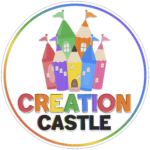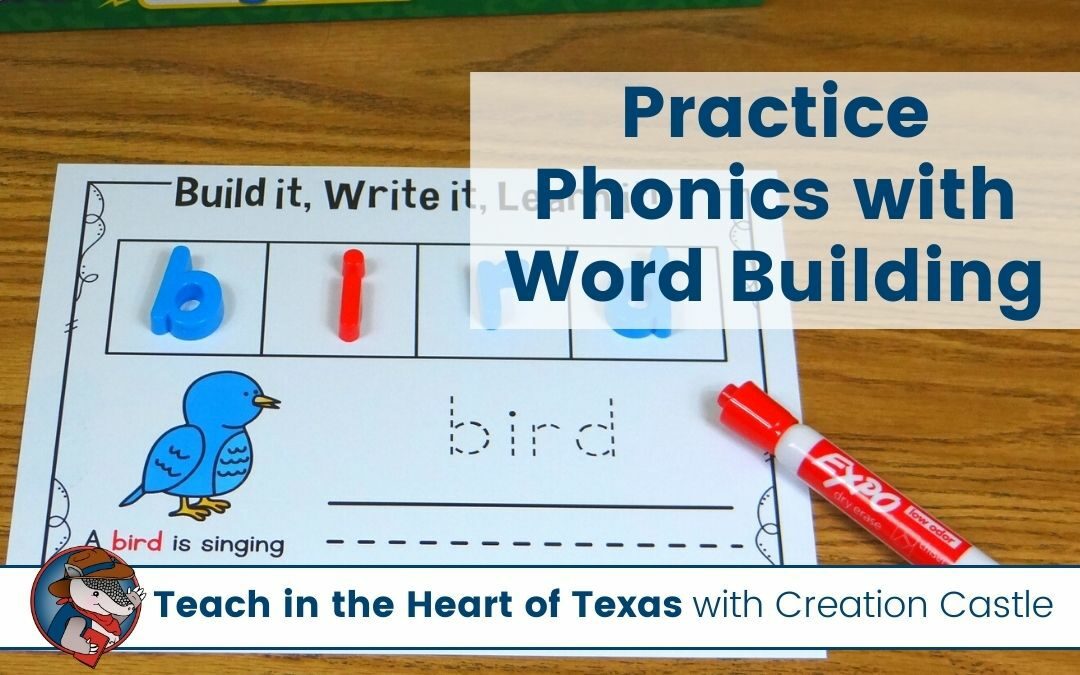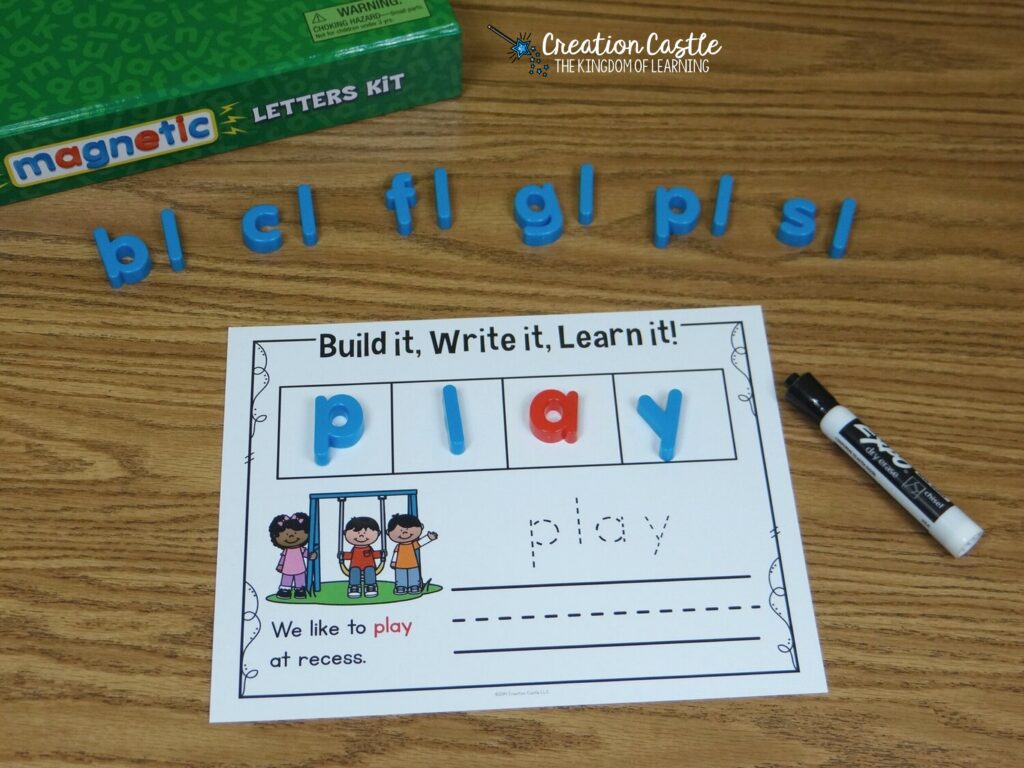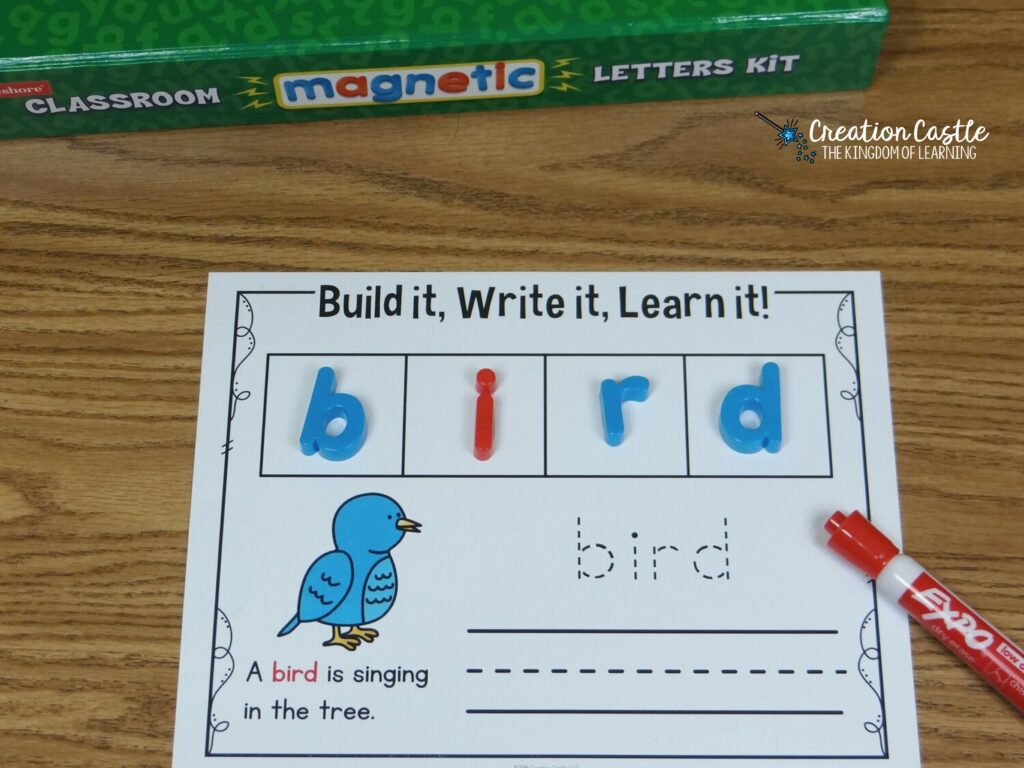How often are you giving your students the chance to review and practice phonics skills to truly master them? If you are a kindergarten or first-grade teacher, chances are probably not enough. Are your students regularly completing word building activities? Do you play phonics games with your students? Do you recite songs to practice phonics skills?
So often in these early grades, because we have so much to teach them, we often introduce and work with a skill over the course of the week and then just move on. The truth is most students need at least a dozen exposures to each word to make it stick. But when we have a focus on building phonics skills to help read nearly any word, we need to increase that exposure even more.
Quick Links
Word Building Defined
Word building is an interactive and hands-on approach to phonics practice that involves breaking down words into individual sounds, or phonemes, and then building new words by manipulating those sounds. Word building activities can include using letter tiles or cards, magnetic letters, or even just pencil and paper to create new words.
Benefits of Word Building for Phonics Practice
Word building activities can be an effective way to help students develop phonics skills. By manipulating sounds to build new words, students can:
- Improve phonemic awareness: help students become more aware of individual phonemes and how they combine to form words.
- Develop spelling skills: help students improve their spelling skills by reinforcing phonics rules and patterns.
- Build vocabulary: help students expand their vocabulary by introducing them to new words and word families.
Typical Word Building Activities
In typical word-building activities, we provide students with a set of letters and ask them to create a series of words.
For example, you may ask the students to make words with the letters: m, a, p, t, n. Students might begin by building the word map. Then you would ask them to change the letter p to t and read the new word mat. This type of practice gives students the opportunity to work on blending as they create and read new words.
Another way you could practice making words with the same set of letters is to begin by having students create the word tap. Then ask students to change the word to tan. This requires students to isolate the sound that is changing and determine what letter to replace it with
Activities like this are great for guided practice, but they do not lend themselves to independent practice.
Word Building Independently
Since we need to give students more time to practice phonics skills, it is important to incorporate them into their independent work. One way to achieve this is with word-building mats.
If you look around, you’ll find a variety of word-building mats available. I’m partial to the mats that are more than just building words. If you can utilize mats that put the words in context, then you can work on a few skills at once!
For example, in my phonics word-building mats, students build a word, write the word, and read the word in a sentence. This gives them lots of exposure to the word and puts it in context for them.
For more of a challenge, I also offer mats where the word is not provided for the students. Instead, they must use the picture and sentence to identify the missing word and figure out the spelling on their own.
Take the word throne as an example. The mat shows a picture of the thrown and gives the following sentence: The king sits on a ______. Students can then deduce the word is “throne” and then work to fill the six boxes that indicate how many letters are in the word.

Creation Castle
Heather is the author of Creation Castle. She has experience with general education, special education, and ESL students in kindergarten through fifth grade. She specializes in early elementary math and literacy, as well as organization.








